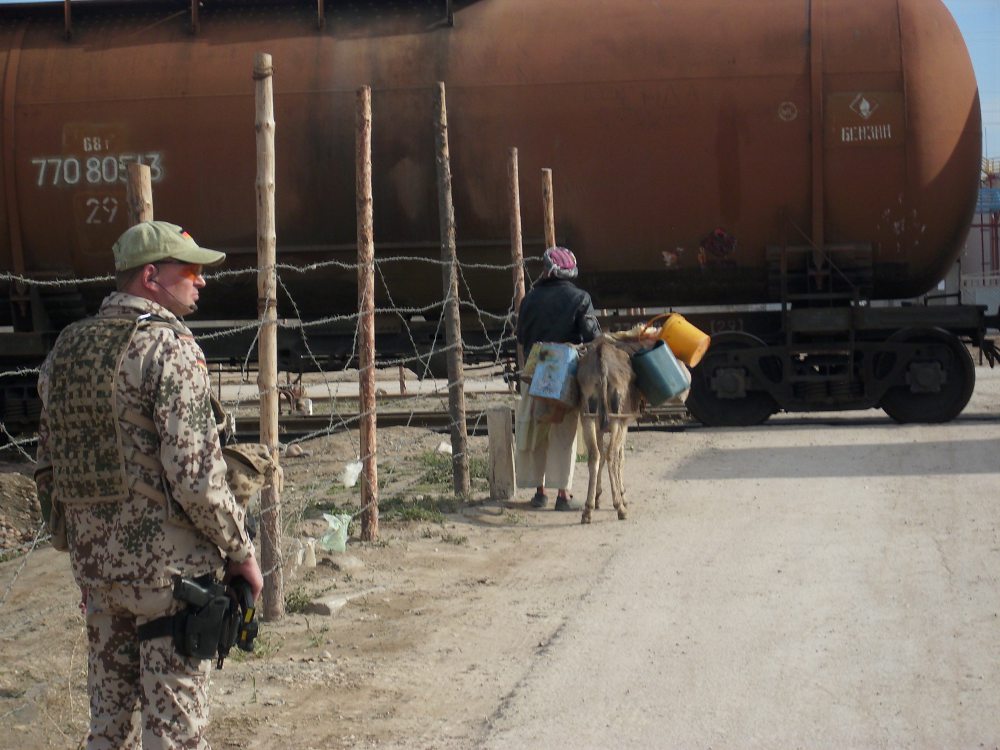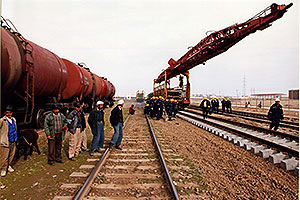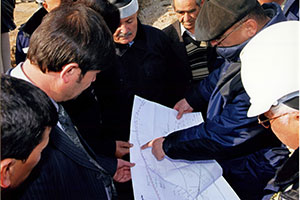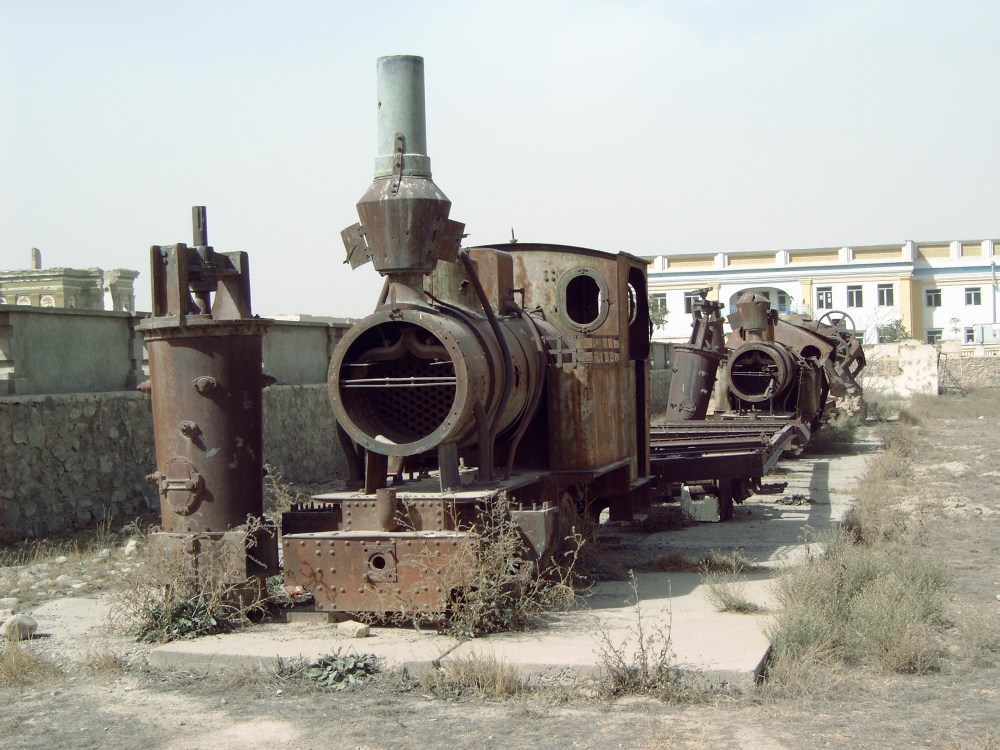The Army Strong Stories website has an article Hairaton, Afghanistan – On the Uzbekistan Border by Maj. Christopher Lecron. “Containers are off-loaded at the rail yard and put on trucks. We are hoping to expand the rail line further south to reduce costs and increase efficiency.” He also has a March 24 2010 photo of the border.
Hairaton, Afghanistan Hopes to Move More U.S. Military Cargo
Story by Maj. Christopher Lecron
Date: 03.24.2010
Posted: 03.27.2010 01:40HAIRATAN, Afghanistan — The mayor of Hairaton, Afghanistan and several other town logistics officials met with U.S. Air Force Major General Robert McMahon and his staff to discuss potential improvements in the cargo supply chain from Uzbekistan into Afghanistan.
Hairaton is the border crossing for a high volume of truck, rail and river barge cargo transiting into Afghanistan.
“We are always looking for additional supply routes into Afghanistan and we hope to improve the route through Hairaton with a rail line that extends all the way to Masar-e Sharif,” said McMahon. Currently, the rail line ends at Hayraton and containers are trans-loaded onto trucks for onward movement.
McMahon is the director of the Central Command Deployment and Distribution Operations Center. The agency monitors and optimizes the flow of cargo into Afghanistan. After reading daily reports of U.S. forces cargo transiting Hairaton, the team wanted to survey the town and logistics center with their own eyes. The trip included a walking tour of the rail yard, truck border crossing, and river barge site. German soldiers from nearby Camp Marmal provided a security detail for the trip.
Hikmat Rahmetov, a representative from Hapag-Lloyd, served as the subject matter expert for Hairaton logistics. Rahmetov routinely works with U.S. military agencies to transport containers by truck and rail from Hayraton into Afghanistan. Hapag-Lloyd mostly moves U.S. military cargo through Hayraton, but hopes to expand shipping to include NATO cargo as well.
With very safe, secure areas, welcoming government and commercial partners, Hayraton is an ideal place to increase the flow of re-supply into Afghanistan. The potential completion of a rail line that runs south from Hairaton would only increase the volume and efficiency of cargo flow. In addition, increased transportation requirements would create more jobs and help to fuel the local economy.
Source: DVIDS, 2010-03-24



